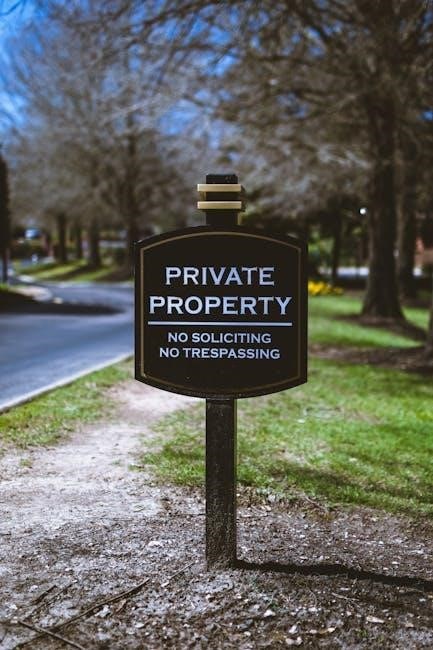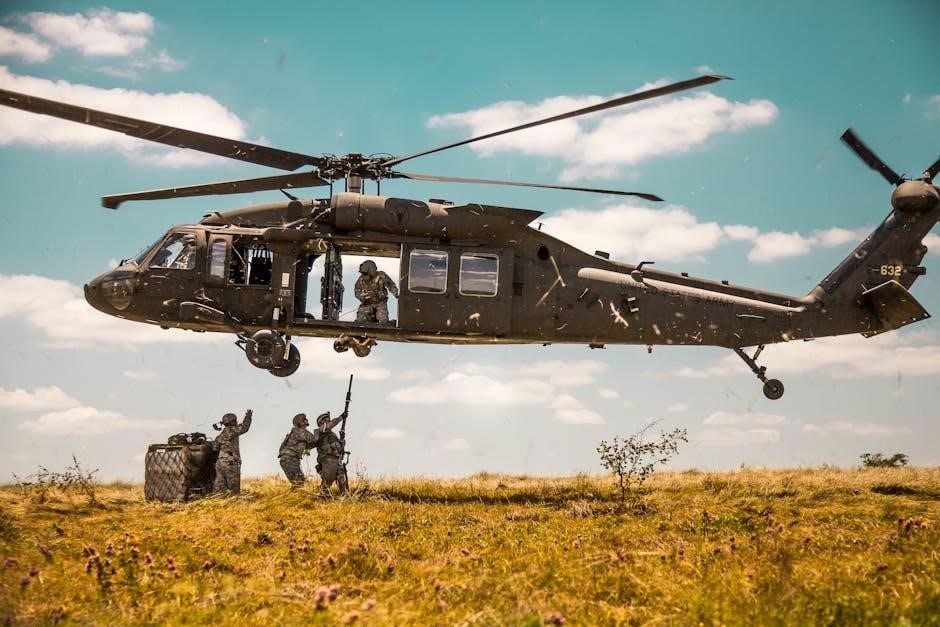Army Regulation 190-11 provides guidance on physical security of arms, ammunition, and explosives, as outlined in the
regulation
document․
Overview of the Regulation
This regulation outlines the policies and procedures for physical security of arms, ammunition, and explosives, and is effective as of 17 January 2019․ The regulation applies to all military personnel, civilian employees, and contractors who have access to these resources․ It provides guidance on the storage, handling, and transportation of arms, ammunition, and explosives, as well as the procedures for reporting incidents and accidents․ The regulation is divided into several sections, each addressing a specific aspect of physical security, and is intended to ensure the safe and secure management of these resources․ It is available online as a pdf document․

Responsibilities and Compliance
Unit commanders ensure compliance with the regulation and procedures․
Unit Commanders and Custodians
Unit commanders and custodians play a crucial role in ensuring compliance with the regulation․ They are responsible for establishing measures to safeguard arms, ammunition, and explosives․ According to the regulation, unit commanders and custodians must comply with the prescribed procedures to ensure the physical security of these items․ They must also ensure that personnel under their command are aware of the policies and procedures outlined in the regulation․ This includes verifying that assigned personnel are authorized to register firearms on the installation, as outlined in the regulation, and taking necessary actions to prevent unauthorized access․

Registration and Authorization
Registration and authorization procedures are outlined in the regulation document for military personnel and civilians․
Firearm Registration on Military Installations
Firearm registration on military installations is a critical aspect of Army Regulation 190-11, ensuring that all privately owned firearms are properly accounted for and secured․ The regulation outlines specific procedures for registering firearms, including the requirement for personnel to register their firearms with the installation’s provost marshal or director of emergency services․ This process involves providing detailed information about the firearm, including its make, model, and serial number, as well as proof of ownership and completion of a firearms safety course․ The registration process helps to prevent unauthorized access to firearms and reduces the risk of accidents or theft․

Waivers and Exceptions
Department of the Army approves requests for exceptions to regulation provisions with detailed compensatory measures, as per
regulations
guidelines always․
Requests for Exceptions
Requests for exceptions to the regulation must include detailed information regarding compensatory measures to be taken, as outlined in the regulation document․
The Department of the Army must approve these requests, ensuring that the measures meet or exceed the regulatory requirements․
The process for requesting exceptions is governed by specific guidelines and procedures, which are designed to ensure that exceptions are granted only when necessary and appropriate․
These guidelines and procedures are outlined in the regulation, providing a clear framework for requesting and approving exceptions, and are used to determine the level of compliance with the regulation․
Regulation supersedes previous versions, updating physical security policies and procedures effectively immediately always․
Supersession of Previous Regulations
This regulation supersedes FLW Reg 190-11, dated 8 August 2008, and FLW Reg 190-6, dated 16 September 2013, updating policies and procedures accordingly always․ The supersession of previous regulations ensures that the most current and effective physical security measures are in place, providing a safe and secure environment for personnel and resources, and outlining the responsibilities of unit commanders and custodians in maintaining compliance with the regulation, and the importance of adherence to the new policies and procedures․

Personnel and Access
Personnel require access to weapon resources with proper authorization always granted․
Unaccompanied Access to Weapon Resources
Access to weapon resources is strictly controlled, with unaccompanied access granted to authorized personnel only, as determined by unit policies and Army regulations, ensuring all personnel meet specific requirements and follow established procedures to maintain security and safety protocols, with access limited to necessary situations, and all actions thoroughly documented and monitored to prevent potential breaches or misuse of weapon resources, and to ensure compliance with Army Regulation 190-11 and other applicable regulations, with proper training and supervision provided to all personnel with access to weapon resources․
Army Regulation 190-11 ensures safety and security protocols are followed always․
Importance of Compliance
Compliance with Army Regulation 190-11 is crucial for ensuring the safety and security of arms, ammunition, and explosives․ The regulation outlines specific requirements and guidelines for handling and storing these materials․ By following these guidelines, units can minimize the risk of accidents and unauthorized access․ Compliance also helps to prevent theft and misuse of sensitive materials․ Furthermore, adherence to the regulation demonstrates a commitment to responsible and professional practices․ Overall, compliance with Army Regulation 190-11 is essential for maintaining a secure and safe environment․ This is achieved through strict adherence to the regulation’s provisions and guidelines․